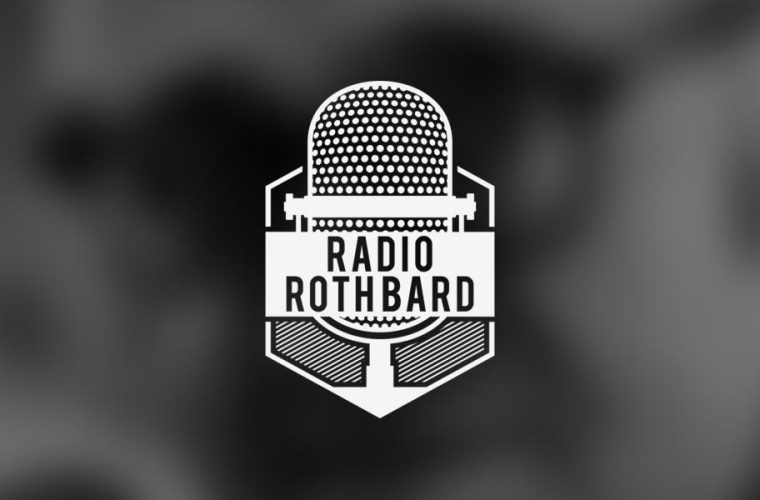
Melissa Swift: Human Action To Build A Powerhouse Workplace
What can economics tell us about designing fulfilling jobs and productive workplaces? Quite a lot if we apply the economics of subjective value and empathy. Melissa Swift is the author of Work Here Now: Think Like A Human And Build A Powerhouse Workplace. She discusses her research on the Economics For Business podcast.
Knowledge Capsule
Poorly designed jobs and workplaces are dangerous, dull, annoying, frustrating and/or confusing.
The results of academic research have confirmed how alienated many workers are from their jobs, and the trends in these findings are worsening, not improving. During the pandemic, many of us had the opportunity to stand back and survey this situation, and realize that it’s a problem that we need to address.
We can do better by applying Austrian economics principles of subjective value and empathy.
The economics of subjective value should point employers in the direction of asking how employees feel about their jobs and the sense of purpose and meaning they derive from them. Why do these considerations not arise, or why are they insufficiently acknowledged? Melissa Swift sees what she calls a wall between how human beings operate and how the world of work operates. We think in discrete terms about “work” on one hand, and “people” on another, and don’t integrate them well.
Managers have demonstrated a penchant for intensifying work (doing more in less time and with fewer resources) and for pressing for over-collaboration (too many reports, checkpoints, meetings and interactions and exchanges, and belonging to too many teams) with the ultimate result of detracting from an individual’s capacity to get things done. Managers don’t necessarily tie the design of work to impact delivered or value created.
In fact, much work is performative, putting on a display of work that is not necessarily productive (writing impeccable but essentially useless reports, for example).
Managers should be actively looking for and rooting out problems of bad jobs and poor work environments.
Melissa Swift’s formula is to be humble and curious in asking how work feels to those who are doing it. Employees know their work better than managers do (an observation which, of course, turns management science on its head).
There are a couple of “monsters” that can be identified and tamed. One is the anxiety monster – we all feel anxiety about whether we are productive enough, or doing good enough work, or being viewed in a favorable light. Anxious managers stand over people, telling them to work harder and faster. We must shut down all the anxious stories that are in our heads.
Employees can be over-anxious about customers, too. We may tend to over-deliver on customer care and customer expectations, to the point where we train them to be so demanding that they go beyond the point where the corporation is capable of fulfilling its own promises.
Once “monster” jobs — those that generate excess anxiety — are established, there’s a tendency for the HR “copy machine” to copy-paste them throughout the company, so that more employees become stressed.
Listening for job stress and devising better ways of working is an entrepreneurial task.
The entrepreneurial mindset is to listen to customers (in this case, job incumbents), to identify unmet needs, which are aways based on emotion and can never be articulated perfectly clearly, to creatively design new solutions to the customer’s felt problem, and to institute positive change using the new solution. This implies continuous adaptive change in job descriptions, performance expectations, structures, team and tasks.
The entrepreneurial approach is often hard to apply in the corporation. One reason is that incentives are lined up to favor what Melissa Swift calls “smooth”. Management incentive schemes are often designed to encourage “smooth” — no drastic changes or turns, steady progress. Yet the adaptive entrepreneurial system does not promise smooth, and can’t delver it. Innovation in response to changes in customer preferences or competition can be bumpy. And many organizations suffer from autoimmune disease — the defenses go up as soon as something unknown or unprecedented is encountered.
Good leadership can counter the auto-immune response — but it’s leadership that does less rather than more, relaxing constraints and letting those closest to customers and markets to make any needed adjustments and to respond at the rate of change that the market demands. Business school concepts of leadership have goaded executives into over-managing and over-controlling, and reversing the over-active concept of leadership is one of Melissa Swifts core prescriptions.
The HR Department is a big part of the problem.
The deep history of HR is dark. The function was founded to quell violence between labor and management. HR was to stand in the middle and to keep a lid on a boiling pot, as Melissa picturesquely expressed it. Performance management — mechanically measuring humans’ output in these toxic adversarial environments — was never a warm or supportive concept. As big business became more centralized, HR simply became more empowered and widened its scope. There was never much humanism in HR.
HR departments are not typically thinking about work and how work is changing and how to make it a better experience for people. If they were, they’d be thinking differently about matching talent to jobs, thinking more deeply about how alienating and constraining automation technology can be to those who have to use it. They know they are being monitored and measured and assessed.
Melissa recommends couples therapy for technology and those who work with it — to stop each party from driving the other crazy.
Asynchronous work, deconstructed work, transparent work.
Melissa’s book has 90 strategies for organizational level and team level problem solving actions and adjustments. We discussed three directions for better work.
Asynchronous work: fewer meetings, which provides greater flexibility for workers, it naturally de-intensifies (you don’t have to have the report ready for the regularly scheduled Thursday meeting), and it makes for more relaxed collaboration across time zones. Asynchronous work tends to be better documented and more permanent.
Deconstructed work: start with tasks to be done rather than job descriptions; assemble the optimum combination of humans and technology to get the tasks done; let talent flow to the work, i.e., it doesn’t matter if it is full time employees, part-timers, project specialists or gig workers or agencies or consultants doing the work, so long as the tasks get done by the best-qualified talent.
Transparent work: make all information available to all employees at all times, nothing hidden or out-of-bounds. As a result, employees and teams have all the information they need to do their jobs, with no need for hierarchical or administrative intervention. Accountability and empowerment are enhanced, and new talent may emerge when you don’t hire for information but for skill in using it.
Additional Resources
Work Here Now: Think Like A Human And Build A Powerhouse Workplace by Melissa Swift: Mises.org/E4B_208_Book1
Bullshit Jobs: A Theory by David Graeber: Mises.org/E4B_208_Book2



